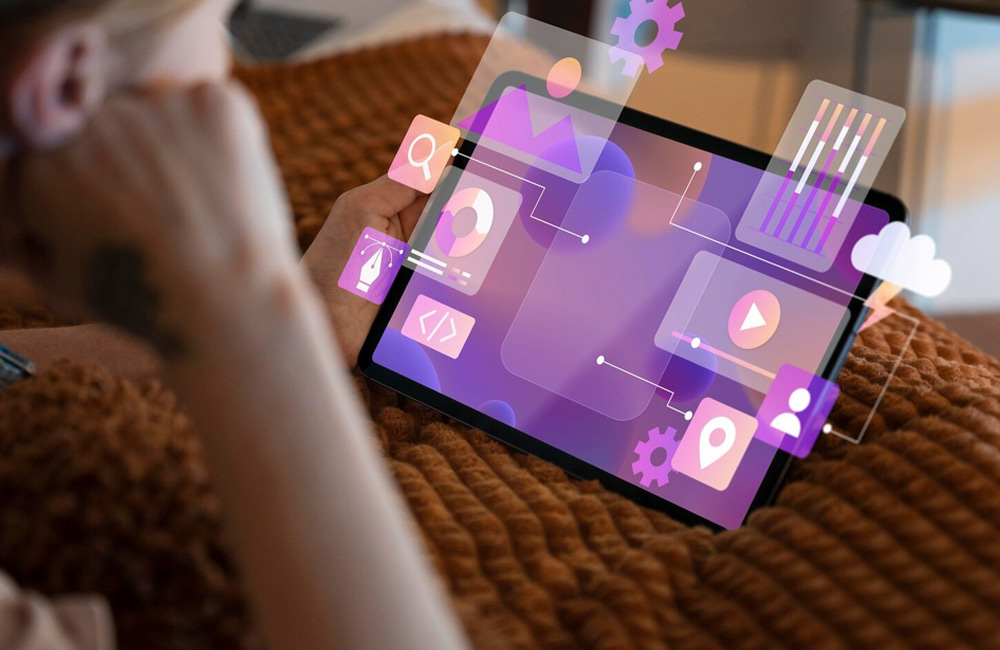The digital world is evolving rapidly – and web design is constantly changing. To succeed in 2025, you need to know the key trends and integrate them strategically into your websites. By using modern technologies, user-friendly design, and aesthetics, businesses can significantly increase conversion rates and user engagement.
1. Dark Mode and Color Variations
Dark Mode is becoming increasingly popular in 2025 as users appreciate eye-friendly visuals and modern aesthetics. Websites should offer flexible color variations to cater to different moods and user preferences. Besides comfort, Dark Mode enhances brand appeal, improves readability at night or in bright environments, and can save energy on OLED displays. Color variations also help create personalized user experiences and reinforce website recognition.
2. AI-Powered Personalization
Artificial Intelligence enables real-time personalized content. From product recommendations to dynamic landing pages, AI improves user experience and increases conversions. AI personalization should be subtle, transparent, and trustworthy to avoid overwhelming users or giving a sense of surveillance. Presenting personalized suggestions as optional enhancements ensures the user remains in control.
Personally, I still prefer individual chats, emails, or phone calls, as they foster human interaction and trust. However, AI can support content efficiency and customization if integrated correctly.
3. Microinteractions and Animations
Small animations and microinteractions enhance usability and bring websites to life. Hover effects, animated buttons, or scroll animations increase engagement and user retention. Microinteractions provide feedback, guide users through processes, and create an interactive, intuitive experience. They help simplify complex functions and contribute to brand perception.
4. Minimalist and Functional Design
Minimalism means using clear structures, ample white space, and reduced elements. Visitors absorb content faster, and actions become more intuitive. Minimalist design improves loading times, UX, and conversions while conveying professionalism and focus on essentials.
5. Mobile-First and Responsive Design
Smartphones are the main access point for websites. The mobile-first approach ensures optimal display on all devices, directly enhancing user experience, SEO, and conversions. Responsive design adapts flexibly to screen sizes, keeping content readable and interactive.
6. Voice UI and Voice Control
More users rely on voice assistants. Websites should be voice-search friendly and optimize key content for voice queries. Clear structure, readable content, and relevant keywords for voice commands improve discoverability and UX. Voice UI opens new interaction and accessibility possibilities.
7. Sustainable Web Design & Performance
Fast loading times, energy-efficient servers, and optimized images reduce environmental impact while improving user experience and SEO. Sustainable web design also supports corporate social responsibility and strengthens brand image. Resource-conscious development ensures better performance across all devices.
8. Storytelling and Immersive Experiences
Storytelling engages visitors emotionally and makes content memorable. Interactive elements, scroll experiences, or visual narratives increase dwell time, brand loyalty, and conversion potential. Storytelling helps present complex content clearly and guides users through the website. Emotionally appealing experiences encourage return visits and enhance brand loyalty.
Conclusion
Web Design 2025 combines aesthetics, usability, and modern technologies. Dark Mode, AI personalization, microinteractions, mobile optimization, Voice UI, and sustainable performance are key trends. Businesses that implement these trends consciously, subtly, and user-focused remain competitive, boost engagement, and provide visitors with a compelling, modern experience.
Image: freepik.com

